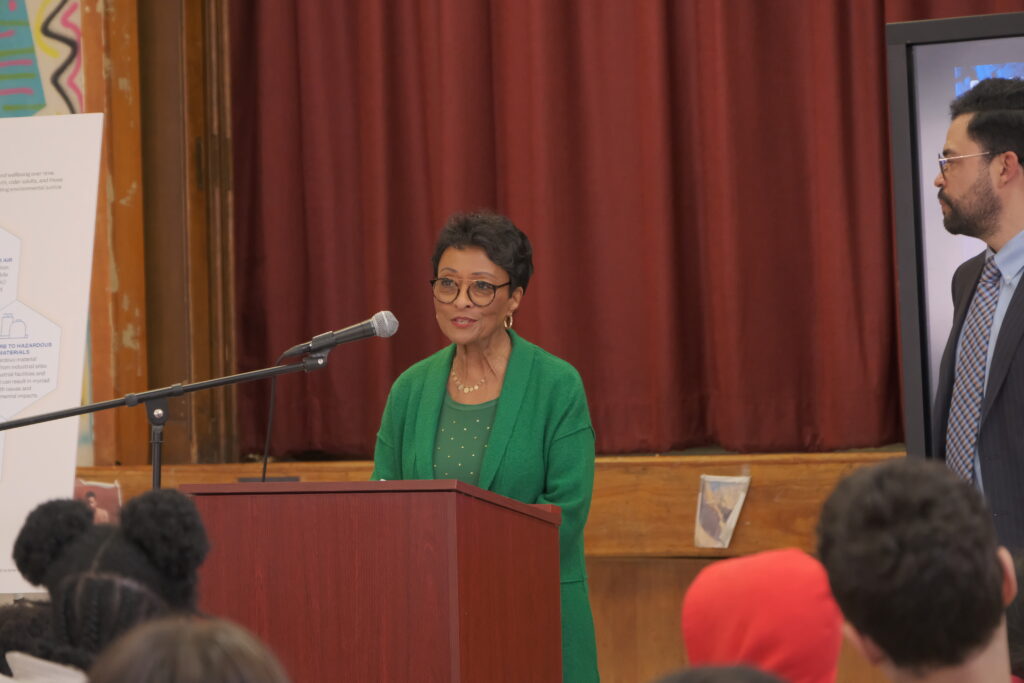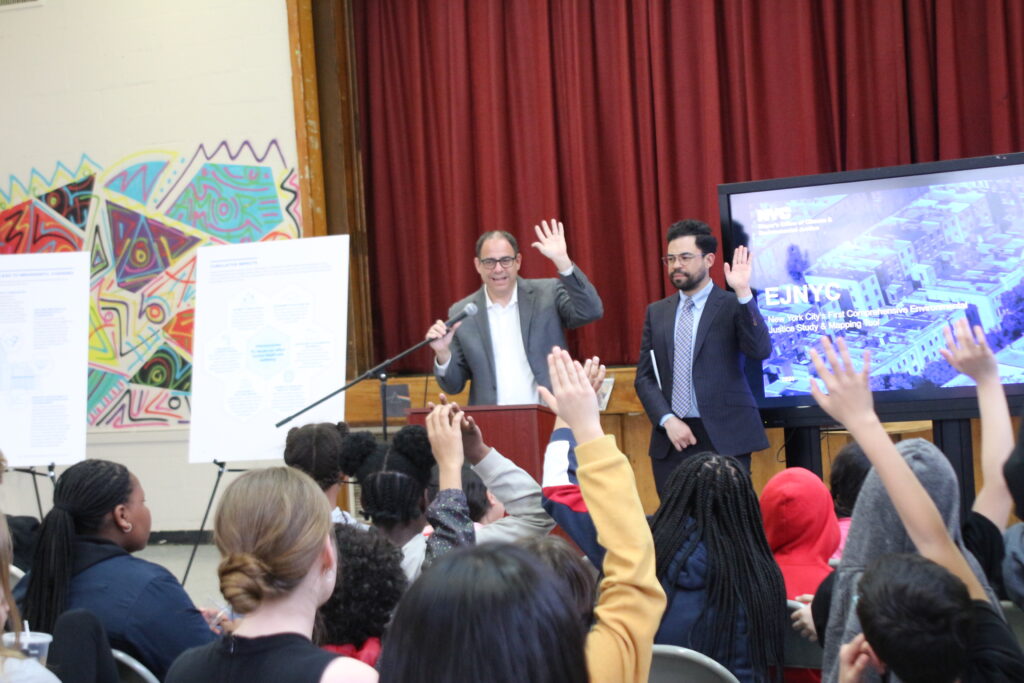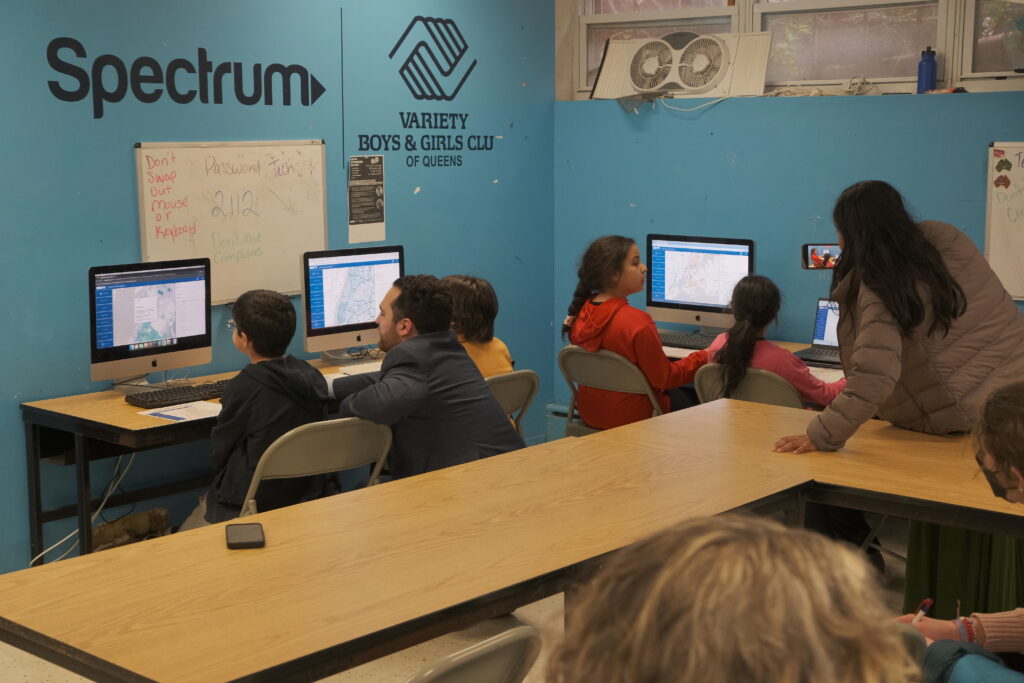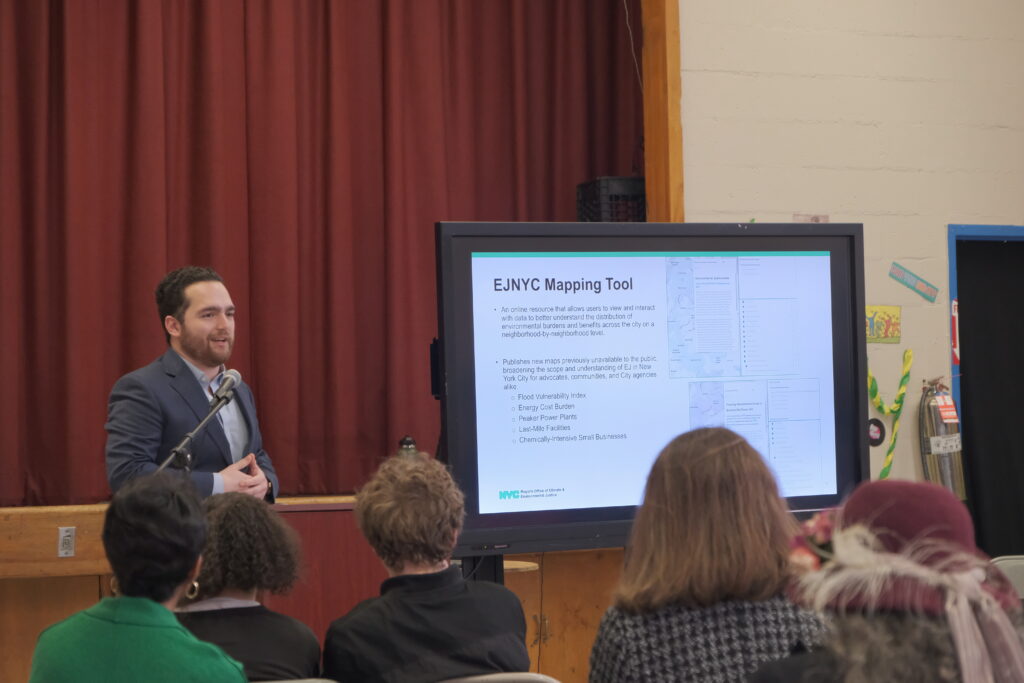By Charlie Finnerty

Peggy Shepard speaks at the Variety Boys and Girls Club. Credit: Celia Bernhardt
The Mayor’s Office of Climate & Environmental Justice (MOCEJ) released their Environmental Justice NYC (EJNYC) report Friday, April 5. In an event at the Variety Boys and Girls Club, MOCEJ Executive Director Elijah Hutchinson presented the findings of the report and demonstrated mapping tools available for the public to explore the data available, emphasizing that the report is the first of its kind in the city.
“With this information in hand, New Yorkers can now advance better policy and work together to achieve better health outcomes, reimagine polluting infrastructure, and increase tree canopy for all,” Hutchinson said.
The report examines flood and heat vulnerability, exposure to air and hazardous materials pollution, transit access, availability of safe and healthy housing, finding that low-income communities and communities of color in New York City are the most vulnerable to environmental inequities.
The Astoria neighborhood surrounding the Variety Boys and Girls Club has long been cited by environmental justice activists as one of the city’s most vulnerable communities, dubbed ‘Asthma Alley’ due to the air pollution from fossil fuel burning power plant smoke stacks which dominate the Astoria-Ditmars landscape. During the presentation, CEO of Variety Boys and Girls Club of Queens Costa Constantinides asked students in the audience if they or someone they know has asthma or breathing problems. At least half the kids raised their hands.
“The wrongs that have happened to communities didn’t happen overnight. It happened over periods of time,” Constantinides said. “Here in this neighborhood, Robert Moses redlined west of 21st Street. And you have public housing built, in 1939 Queensbridge, in 1949 Ravenswood and Astoria houses. And in 1963, they put the big power plant. You guys all know the big power plant there on Vernon Boulevard, you see the big stacks and all the smoke? Well, in this neighborhood, west of 21st Street, the rates of asthma are higher than in the rest of the borough of Queens. What do you think contributes to that?”

Children raise their hands during Constantinides’ speech. Credit: Celia Bernhardt
Peggy Shepard, environmental activist and co-founder and executive director of WE ACT for Environmental Justice, said the report is a crucial milestone in undoing the harms of environmental inequality.
“I’ve been working on these issues for a very long time, and really just waiting for the city to understand its responsibility to address this,” Shepard said. “The whole point of this is not just to get the report. We needed to have the basic facts and now we do. Now it’s about developing a plan to fix these problems.”

Children learn to use EJNYC mapping tools at the Variety Boys and Girls Club. Credit: Celia Bernhardt



